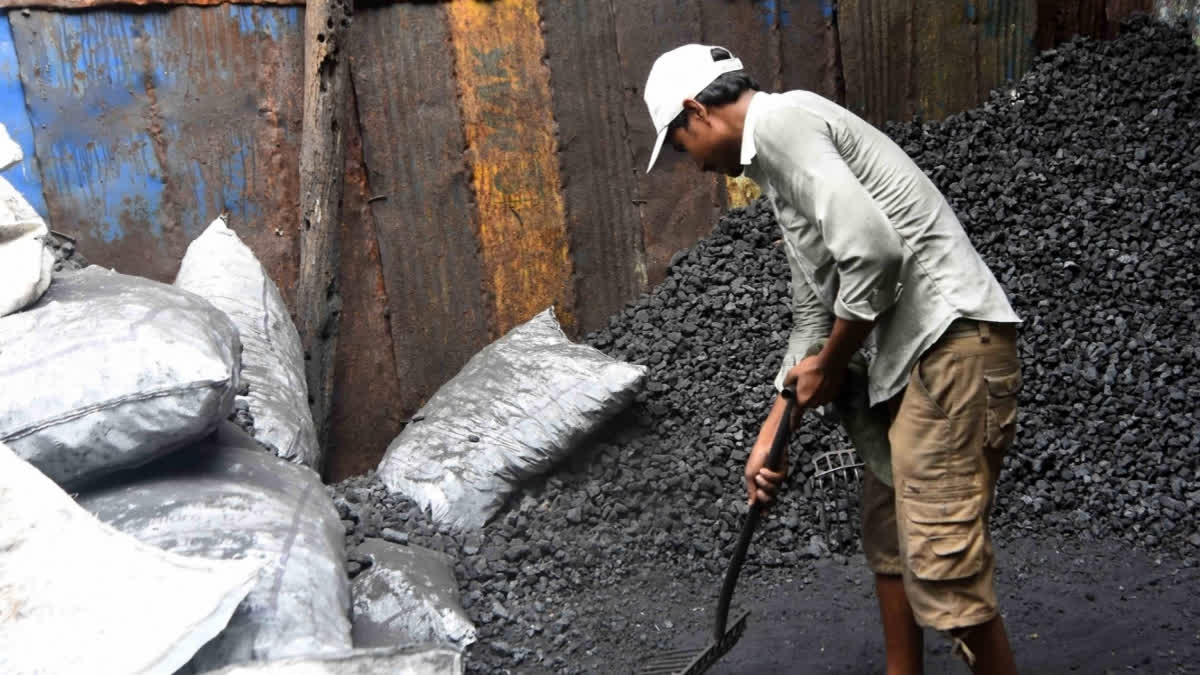New Delhi: Noting that the peak demand for power in India is likely to reach up to 250 GW in the summer season (April – June 2024), the central government has directed the power generation companies (GENCOs) including independent power producers (IPP) to timely import of coal for blending purpose and maximizing production in captive coal mines.
In a letter dashed to the principal secretaries, secretary (power/energy) of all States and UTs including CMDs of thermal generating stations, the power ministry said that adequate coal reserves in domestic coal-based plants (DCBs) need to be maintained by all central and state GENCOs and IPPs.
“The status of the power supply position has been reviewed by the ministry and as per the projections, the peak demand is likely to reach up to 250 GW in the summer season. It has been further observed that despite the increase in loading of domestic coal rakes, the supplies of domestic coal will remain constrained due to various logistical issues associated with the railway network,” the letter from the Ministry of power in possession of ETV Bharatsaid.
It is worth mentioning that States like Kerala have already started facing power shortages.
The letter further said that all the GENCOs (central/state and IPPs) are to firm up their imported coal contracts to ensure supplies till June 2024. “GENCOs must also continuously review the stock positions for their domestic coal based (DCBs) plants and opt for blending as per the requirement so that the adequate coal stocks are maintained at the thermal power plant level,” the letter signed by Anoop Singh Bisht, deputy secretary in the power ministry stated.
In order to ensure uninterrupted power supply across the country, after careful consideration and in consultation with Central Electricity Authority (CEA) and Grid India, it has been decided blending of imported coal at 6 percent (by weight) minimum may be continued till March 2024, the letter said.
As per government records, there is a consistent rising trend in the power demand in the country, coupled with inadequate supply of domestic coal which resulted in rapid depletion of coal stocks at DCBs across the country.
The gap between receipt of domestic coal and consumption of coal from September 1 to October 9, 2023 was to the tune of 12 MT.
“About 11 percent fall of hydropower generation has been recorded in the first half (H1) of the financial year 2024 compared to the corresponding period of FY 2023 due to variable monsoon rainfall. Approximately 2 GW of hydro capacity is out because of floods in Sikkim. The Reservoir levels in northern, eastern and southern regions are less compared to the previous year as on October 9, 2023, which has resulted in lower Reservoir energy content at pan India level. This has put an additional burden on coal-based thermal generation,” the government records said.
In India, power is generated from conventional (Thermal, Nuclear & Hydro) and renewable sources (Wind, Solar, Biomass etc.). However, major production of electricity is achieved through coal, a thermal power plant, which is around 75 percent of the total power generation.
Admitting that the demand for electricity is increasing in the country, Power Minister RK Singh has recently informed in the Parliament that 20 thermal power projects having a total capacity of 27,180 MW are under construction in the country.
He said that 33 Hydroelectric Projects and Pumped Storage Projects having a total capacity of 16768 MW are under construction in the country. In addition, 5 Nuclear Power Projects having a total capacity of 8000 MW are under construction in the country.
“A total renewable energy (RE) capacity of 78935 MW is under construction including 50056 MW of Solar projects and 16225 MW of Wind projects. The Ministry of Power has notified guidelines to promote the development of pumped storage projects in the country on April 10, 2023 with the proactive support of the State Governments. There is a waiver of Inter-State Transmission System (ISTS) charges on the transmission for new Hydro Projects and Pumped Storage Projects,” Singh said.
Significantly, the Government has taken several measures to promote renewable energy in the country by permitting Foreign Direct Investment (FDI) up to 100 percent under the automatic route and waiver of Inter-State Transmission System (ISTS) charges for inter-state sale of solar and wind power for projects to be commissioned by June 30, 2025.
The government has identified that the demand for power has increased rapidly due to rapid economic growth in recent years, providing new connections to 2.86 crore households and increase in hours of supply from 12.5 hrs (2014-15) to 20.6 hrs (2022-23) in rural areas & the supply in urban areas is 23.8 hrs.
As per government records, the peak demand of power from April to November 2023 was 2,43,271 MW against which a total of 2,39,931 MW of power was met leaving a shortage of 3,340 MW of power.
